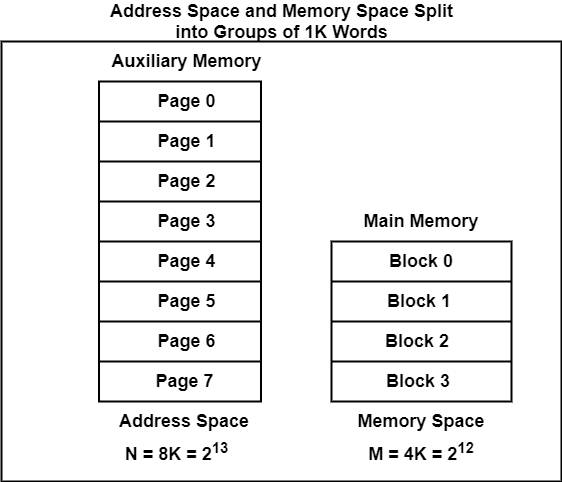
 Data Structure
Data Structure Networking
Networking RDBMS
RDBMS Operating System
Operating System Java
Java MS Excel
MS Excel iOS
iOS HTML
HTML CSS
CSS Android
Android Python
Python C Programming
C Programming C++
C++ C#
C# MongoDB
MongoDB MySQL
MySQL Javascript
Javascript PHP
PHP
- Selected Reading
- UPSC IAS Exams Notes
- Developer's Best Practices
- Questions and Answers
- Effective Resume Writing
- HR Interview Questions
- Computer Glossary
- Who is Who
How to Address Mapping using Pages in Computer Architecture?
The table execution of the address mapping is interpreted if the data in the address space and the memory space are each split into a collection of fixed sizes. The physical memory is broken down into sets of similar size known as blocks, which can range from 64 to 4096 words each. The term page defines a set of address spaces of a similar size.
Example − Suppose a page or block consists of 1K words, then address space can be divided into 1024 pages and main memory can be divided into 32 blocks.
Even though both a page and a block are divided into sets of 1K words, a page defines the cluster of address space, while a block defines the cluster of memory space. The programs are also divided into pages.
Segments of programs are transferred from auxiliary memory to main memory in records similar to the size of a page. The term page frame is at times can recognize a block.
Example − Suppose a computer has an address space of 8K and a memory space of 4K. If they are each divided into sets of 1K words, we receive eight pages and four blocks as displayed in the figure.
At any given time, upto four pages of address space can be accessible in main memory in any one of the four blocks.
The mapping from address space to memory space is made available if each virtual address is considered to be defined by two numbers - both a page number address and a line within the page. In a computer with words per page, p bits can determine a line address and the remaining high-order bits of the virtual address determine the page number.
The diagram shows a virtual address having 13 bits. As each page includes = 1024 words, the higher-order three bits of a virtual address will define one of the eight pages and the lower-order 10 bits define the line address inside the page.


